Why Phones Don’t Belong in School

In this Huffington Post article, I bring attention to disturbing research showing that allowing students to use phones in school puts their learning and safety at risk.
Read the Huffington Post article here.

In this Huffington Post article, I bring attention to disturbing research showing that allowing students to use phones in school puts their learning and safety at risk.
Read the Huffington Post article here.

I wrote this article in the Huffington Post to highlight the importance of preventing video game addiction before it sinks its teeth into children. I describe the tragic story of one boy’s gaming addiction, and the brain research showing prevention is vital.
Read the Huffington Post article here.

Thirteen-year-old Kelly’s parents brought her to counseling because she was cutting on herself with a razor. The teen girl told me that cutting’s physical pain distracted her from feelings of emptiness. A month into treatment, Kelly revealed why she was suffering in a session attended by her parents. “I’m lonely,” she cried.
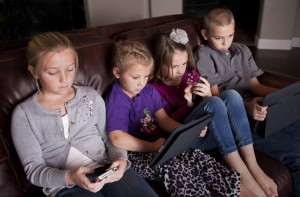
American students are smartphone experts but are falling behind their global competition in reading, math, and other learning fundamentals. See how smartphones are affecting teens’ school success in this Waldorf Today article.

The Huffington Post published Dr. Freed’s article on the challenges of parenting kids in the digital age. The article begins with the story of a mother who doesn’t know if she can set limits on her daughter’s phone.

Recently, Dr. Richard Freed was interviewed by Authentic Parenting’s Anna Seewald on positive steps to raise healthy, happy kids in a digital age.
Listen to the podcast here.
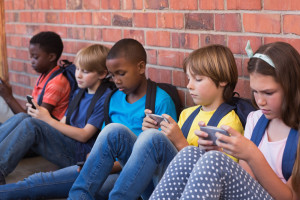
The New York Times’ article, “Steve Jobs Was a Low-Tech Parent,” reveals that leading tech executives set strong limits on their own children’s tech use. One such limit is that kids aren’t provided smartphones until they reach between the ages of 14 and 16. This contrasts with the overall trend of giving younger and younger children smartphones, as many elementary- and middle-school-age kids now carry them.
Why do tech execs parent so differently on the issue of smartphones? In all likelihood, their insiders’ knowledge allows them to see through the false promise that smartphones bring the family closer…
Read the rest of this article in the Huffington Post
Photo credit: wavebreakmedia/Shutterstock

As a child psychologist, I often meet with children who confess that they feel empty inside because their parents ignore them in favor of their smartphones. Thankfully, these kids typically give me permission to speak with their parents about their feelings. When I do talk with these parents, most will make amends.
Yet for every child I work with, I observe many more in my personal life who are snubbed by digitally-preoccupied parents: a girl of about seven who can’t get her dad’s attention because he’s watching a game on his phone, a solemn young boy whose mom is so taken with posts and pictures on her phone that she doesn’t say a word to him for the entire meal.
But I’m not these children’s doctor. As much as I wish to speak up on their behalf, I can’t. So I bite my lip and turn away.
These heartbreaking moments haunt me…
Read the rest of this article in the Huffington Post
Photo credit: Denys Kurbatov/Shutterstock
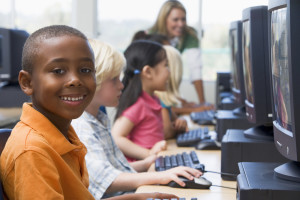
Powerful forces encourage adults to “Let Kids Run Wild Online.” But children, and even teens, have less developed judgment abilities, making them easy prey for media corporations that have convinced a generation of kids to immerse themselves in entertainment tech at the expense of vital developmental activities. In an article posted on the Association for Library Service to Children (ALSC) blog, I encourage America’s librarians to reject the myth that kids can navigate tech on their own. Instead, I appeal to librarians to provide much needed leadership and direction on kids’ technology.
Read the ALSC article here.
Photo Credit: Shutterstock
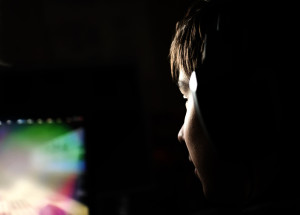
Jane Brody’s recent New York Times’ article, “Screen Addiction Is Taking a Toll on Children,” set off a firestorm of comments (more than 600 at last count). Many of those commenting said they see for themselves children’s unnatural attachment to digital devices. However, others questioned the addictive potential of technology, asking “Where’s the research?” Here, I’ll explain the science and tragedy of child tech addiction…
Read the rest of this article in the Huffington Post
Photo Credit: Chepko Danil Vitalevich/Shutterstock
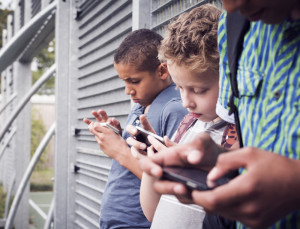
In a recent Huffington Post article, I describe how extremely high rates of smartphone use among teens of color are likely to expand the racial achievement gap.
Photo Credit: Twin Design/Shutterstock
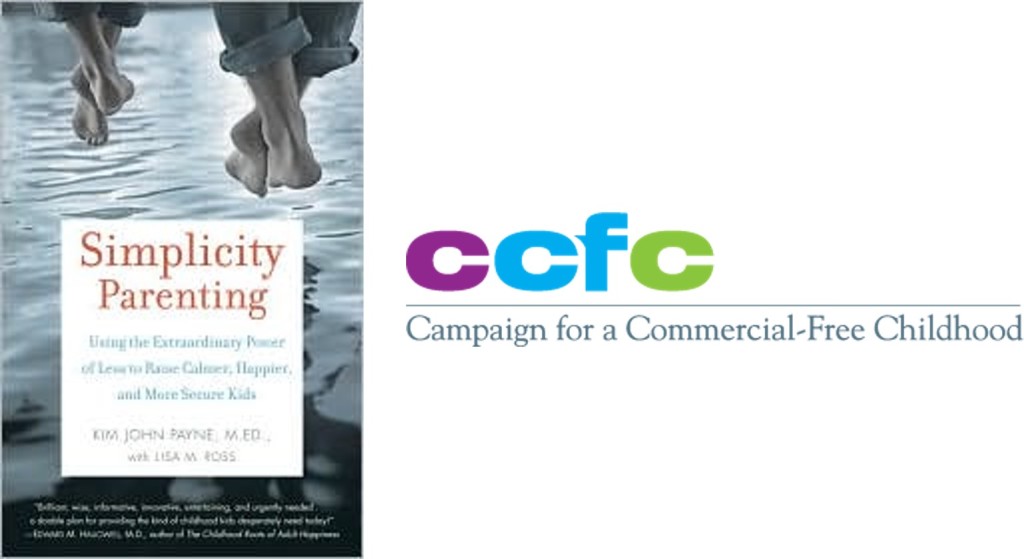
I was recently interviewed by Simplicity Parenting’s Traci McGrath for their e-magazine. One of the central tenets of Simplicity Parenting, as described by educational consultant Kim John Payne, in his book by the same name is “unplugging” in order to promote kids’ social and emotional intelligence.
Highlights of the Simplicity Parenting feature—which coincided with the release of “Wired Child”—include a look at a digital-age myth that is particularly harmful to children and families: the “digital native-digital immigrant” belief. This notion suggests that kids, by virtue of being raised surrounded by e-toys and e-devices, are capable of deciding how they should use video games and the like, and that parents and teachers are relatively clueless in an age when technology is king.
Nothing could be further from the truth. Parents (and teachers)—because of their more developed brains and greater life experience—are much better able to gauge how kids’ use, or frequently overuse, of technology can affect their emotional health and academic success. Parents, teachers, and others who care for kids must have the confidence to provide children, and even teens, guidance on matters of technology.
I’ve also had the opportunity to work with the Campaign for a Commercial-Free Childhood (CCFC), which recently highlighted the release of “Wired Child” in their newsletter. No organization works harder than the CCFC to bring attention to the destructive screen/tech environment that has enveloped this generation of kids.
The CCFC is calling attention to the pending release of the remarkably creepy Hello Barbie, which as the CCFC describes is “a Wi-Fi-connected doll that uses an embedded microphone to record children’s voices. Everything a child says will be recorded, sent over Wi-Fi, stored on the cloud, and then analyzed to figure out that child’s likes and dislikes.” The CCFC is asking that Mattel, makers of Hello Barbie, discontinue marketing and production of the eavesdropping doll. Yes, technology offers benefits for kids when offered at the right age, and when focused on productive uses. But Hello Barbie is reflective of the current kids’ tech environment. One which poses great risks and limited benefits.

Two-year-old Francisco spends 6 hours a day on a smartphone, summoning Ninja Turtles episodes with the swipe of his finger. He prefers technology to playing in his backyard, as his mom says, “He’ll have tantrums if we take the phone away.” Francisco’s tech-heavy life is described in the recent San Jose Mercury article “Toddler tech: Is all that YouTube good for them.” The article describes the launch of Google’s new YouTube Kids service, the first Google product aimed at little kids. The service offers large bold icons and Google says “it’s fast and simple for little thumbs to navigate,” even if kids can’t spell or type.
Soothing parents’ concerns, Google suggests YouTube kids is an electronic educational babysitter. Shimrit Ben-Yair, YouTube Kids Group Product Manager, says, “Like most parents, I love helping my kids learn more about something they’re interested in,” and YouTube Kids’ promotional materials tell parents, “Sometimes you need a little peace and quiet!”
These selling points sound much like those for another tech product which promised parents “Peace! Quiet!” and claimed it’s great for “keeping small fry out of mischief… and out of mother’s hair,” yet will help kids become “more interested in schoolwork” and get “better marks in school.” Such claims are actually from a 1950 advertisement (below) promoting what was then the most modern in high-tech screen devices: a Motorola television set. Unfortunately television, on the whole, has not educated children well. While kids can learn from limited exposure to educational programming, American kids typically spend long hours watching entertainment TV that displaces reading and homework. The result? TV generally detracts from academic success.
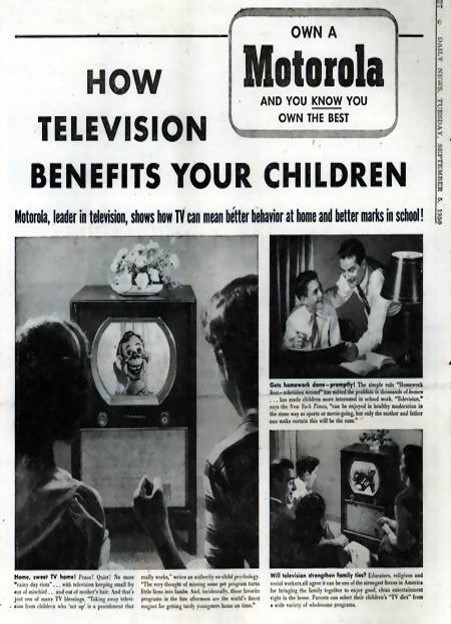
Today’s kids use of technology is also heavily entertainment-focused. According to the Kaiser Family Foundation, children spend 5½ hours each day with amusement based screens—including video games, online videos, social networks, and TV—while spending only 16 minutes a day using the computer at home for school. (Teens somehow manage to spend an additional 2½ hours texting and talking on the phone.) Studies show that the more time kids use amusement-based technologies, such as video gaming and social networking, the less well they do academically.
Our kids’ immersion in screen amusements is beginning earlier in their lives, with the average preschool-age child now watching more than 4 hours of television and video content each weekday—increasingly on mobile devices. What’s driving our kids’ extremely high levels of entertainment screen use? One reason is that providing kids mobile devices gives them more opportunities to watch TV—basically anywhere, anytime. According to the Kaiser Family Foundation: “Being able to access TV online and on mobile platforms [including iPods and smartphones] has led to a substantial increase in the amount of time young people spend watching, to a total of just about 4½ hours a day (4:29), nearly 40 minutes more than 5 years ago (3:51).”
There are costs. The National Scientific Council on the Developing Child at Harvard University recently said that young children frequently left for hours at a time in front of the TV are prey to a type of understimulation that can damage brain development. Today’s parents may recognize why using television this way may be bad for children, however, they may be swayed by promises of a high-tech babysitter in the form of a tablet or smartphone. Yet often young children engage in exactly the same activity, watching TV (or its equivalent), on mobile devices.
I realize that parents need a break from the difficult tasks of raising young children. I also understand that many families are burdened financially, and struggle to afford traditional childcare options such as preschool, and that today’s mobile devices—which have an uncanny ability to occupy children for hours at a time—are a tempting alternative. That being said, parents making decisions about their young kids’ use of technology need to be aware of the realities of how mobile technologies are typically used by children. And all of us—including tech giants bursting with revenue—should be looking for better ways to care for our children.
The New York Times’ article “Is E-Reading to Your Toddler Story Time, or Simply Screen Time?” asks if e-readers are a good substitute for traditional books. The article highlights research suggesting that traditional books are more effective at helping kids learn to read than e-books, in part because kids become distracted by the games and other bells and whistles provided by e-readers. The article also underscores how traditional books foster dialogic reading, the process in which parents engage their children in discussion (dialog) about a book they read together. Because dialogic reading helps kids actually practice using language, there’s no surprise that studies show this helps kids use more words, speak in longer sentences, score higher on vocabulary tests, and have better expressive language skills.[1] These findings seem to be reasons enough to choose traditional books over e-readers.